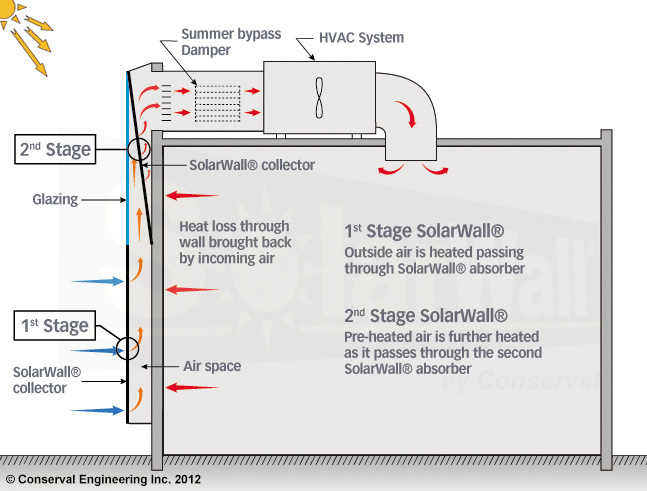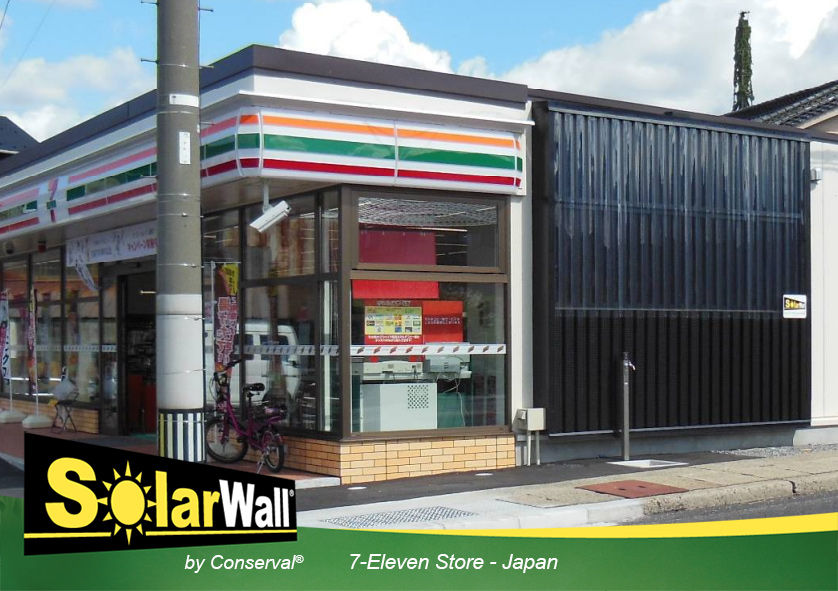Solar air heating can provide air temperatures up to 20-55 ˚C above ambient temperatures. This impressive ability to capture free energy reduces heating costs and reduces carbon emissions. So why don’t we all have one on our house, apartment building, or commercial building? Good question! Let’s look at what a solar wall is and how it works.
The technique used to preheat outdoor supply air can be seen in the first image which shows a solar wall from Conserval. This system is called the SolarWall 2-Stage. The first stage of heating uses a perforated metal panel. The sun’s energy warms the metal heat transfer surface which warms the air as it passes through hundreds of perforations in the collector. The second stage allows the sun’s energy to pass through a glass panel to the second metal panel. Heat transfer from the second collector occurs as the air is again pulled through a second set of perforations in the collector. The result is an incoming air temperature between 20-55 ˚C above the ambient temperature. 
Natural Resources Canada produces a program called RETScreen that simplifies the calculation of solar air heat gains. For example, a building with 800 cfm of outdoor air flow can reduce natural gas usage by close to 1000 cubic metres annually by adding a solar wall with an area of 15 square metres. This represents a potential carbon emissions reduction of approximately 2000 kg.
The second image shows the potential size of a small-scale solar wall. The product can be easily adapted to fit any wall size and orientation. Even if the wall is not facing directly south, significant gains can be achieved. Incorporating this heating system early in the design process can maximize the potential energy savings and reduce the payback period.
As energy price hikes are inevitable and carbon emissions continue to rise, it’s nice to know that you can have a back up heating solution where you can feel the free energy.

